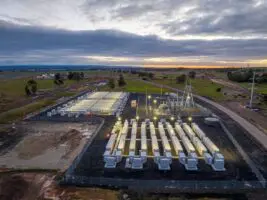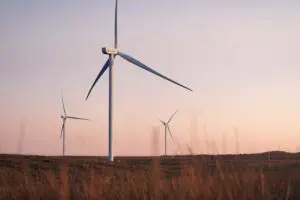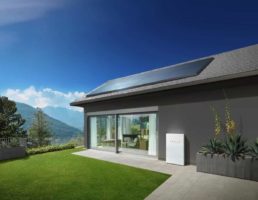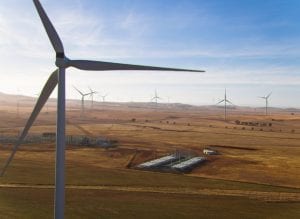The new film ‘Planet of the Humans’ was written, directed and produced by a self-styled environmentalist called Jeff Gibbs, but unfortunately Michael Moore has lent his name to it as executive producer.
Moore is one of my heroes, but this time he has made a bad mistake. In summary, the film’s content on renewable energy is out-of-date, superficial, simplistic and misleading.
It makes many of its points by interviewing people whose principal commitment is to fossil fuels or fossil fuelled electricity, it cherrypicks atypical environmentally damaging projects, uses hearsay (e.g. to criticise Bill McKibbin), and recycles half-truths and myths produced by the fossil fuel and nuclear industries that have been refuted again and again by experts.
The bias is appalling. Specific examples follow:
Example 1: Alleged need for fossil fuel backup
It creates the false impression that large-scale electricity systems powered mostly by renewable energy need “fossil fuel back-up 100% of the time”. This is refuted by experience in countries and states that have:
(i) large hydro-electric contributions (e.g. Iceland, New Zealand, Bhutan, Tasmania);
(ii) little hydro but large wind and/or solar contributions and strong transmission interconnections with neighbours (e.g. Denmark with about 50% wind; the North German States of Schleswig-Holstein and Mecklenburg-Vorpommern with 100% wind net; Scotland with 76% renewables, mostly wind); and
(iii) large wind/solar contributions, little or no hydro, and weak interconnections with neighbours (e.g. South Australia with about 55% wind and solar). In the past year, South Australia has operated reliably during three breakdowns of its interconnection with Victoria, the last occasion for more than a fortnight. Denmark runs on 100% renewables for over 300 hours per year (not consecutive) and yet has one of the most reliable electricity systems in Europe.
This myth is also refuted by simulation modelling of 100% renewable systems in which wind and/or solar supply the majority of annual demand: Australia (simulations by several groups including our group at UNSW — Elliston, McGill, Diesendorf, Riesz); USA (Mark Jacobson et al.), Europe, Germany, Denmark, etc.
These simulations — spanning one to six years of hourly (or less) data on wind, solar and demand — show that baseload power stations (e.g. coal; nuclear) are unnecessary and, in some regions such as Australia, the amount of storage required is small.
A good storage combination in Australia, in addition to existing hydro, could be a combination of batteries and off-river pumped hydro.
Example 2: False argument
The film uses the false argument that an industry that’s connected to the grid cannot rely on 100% renewable energy. This is the naive notion that the industry (or country or state) has to generate all its renewable energy locally, e.g. from its own roof.
In reality, large corporations (e.g. Apple, Tesla) may generate part of their electricity locally and the remainder by purchasing renewable electricity via the grid, either through a Power Purchase Agreement from a wind or solar farm (e.g. Bluescope Steel in Port Kembla) or by building or purchasing part of a wind or solar farm (e.g. Oz Minerals; Element 25).
The North German states mentioned above trade electricity with their neighbours; on average over a year they use 100% renewables.
Example 3: Energy return on energy invested
The myth that life-cycle energy invested (and carbon emissions) in building renewable energy technologies is comparable with the lifetime energy generation, is false.
Solar panels generate the energy required to build themselves in 1-2 years of operation, depending on type of panel and location, and their lifetime is about 20 years; large wind turbines in 3-12 months, depending on size of turbines and location, and their lifetime is 25-30 years.
Example 4: Misleading out-of-date material
Solar panels with 8% efficiency were on the market decades ago; nowadays 20% panels are available.
My home is totally powered by just 5 kilowatts of panels with 20% efficiency and with 10 kilowatt-hours of battery storage — my usage is low and I sell the majority of my rooftop electricity back to the grid.
Incidentally, on a rainy day, my system is still generating 10-15% of its rated power.
The Chevy Volt was superseded many years ago.
Example 5: Simplistic, misleading treatment of bioenergy
The film’s treatment of bioenergy is simplistic, because some methods of production are environmentally damaging (e.g. ethanol production in the USA) while others are environmentally sound (e.g. ethanol production from waste starch from the wheat industry in Australia).
The film’s treatment of bioenergy is also misleading, because it creates the false impression that environmentalists and renewable energy proponents envisage a large contribution from bioenergy to future renewable energy systems.
The truth is that some see it playing a minor role while almost all the others reject it entirely. Hardly anyone sees it as playing an important role.
The bigger picture
On one general, obvious point, I agree with Giggs: infinite growth on a finite planet is impossible. We must transition to a steady-state socio-economy, that is, one with no growth in the use of energy, materials, land and population. The choice is not either technology or ending growth — we must do both.
However, based on my research and that of others, I believe that the technological transition is the most urgent.
Mark Diesendorf is honorary Associate Professor in the Environment & Governance Group at the School of Humanities & Languages at UNSW Sydney










